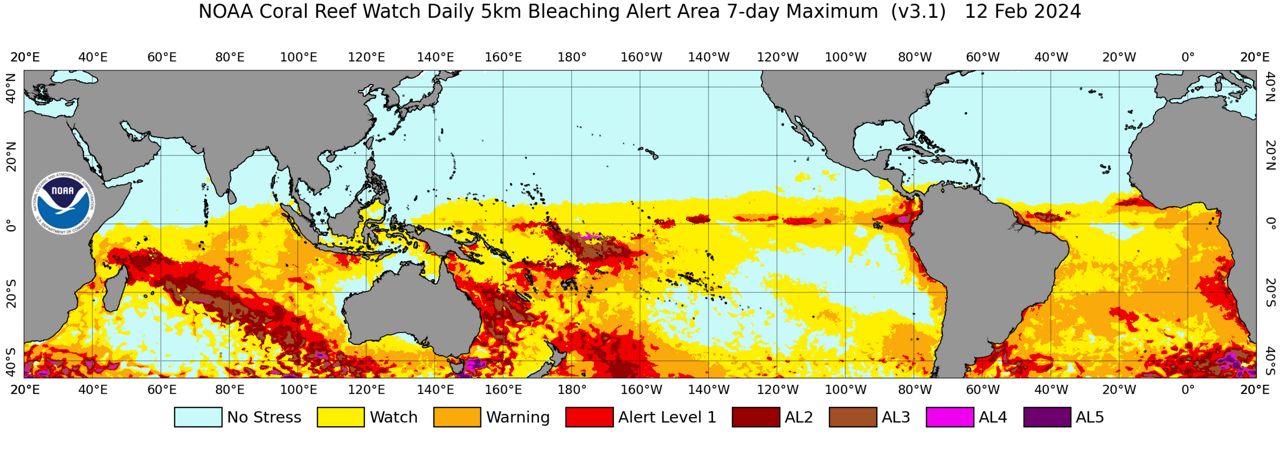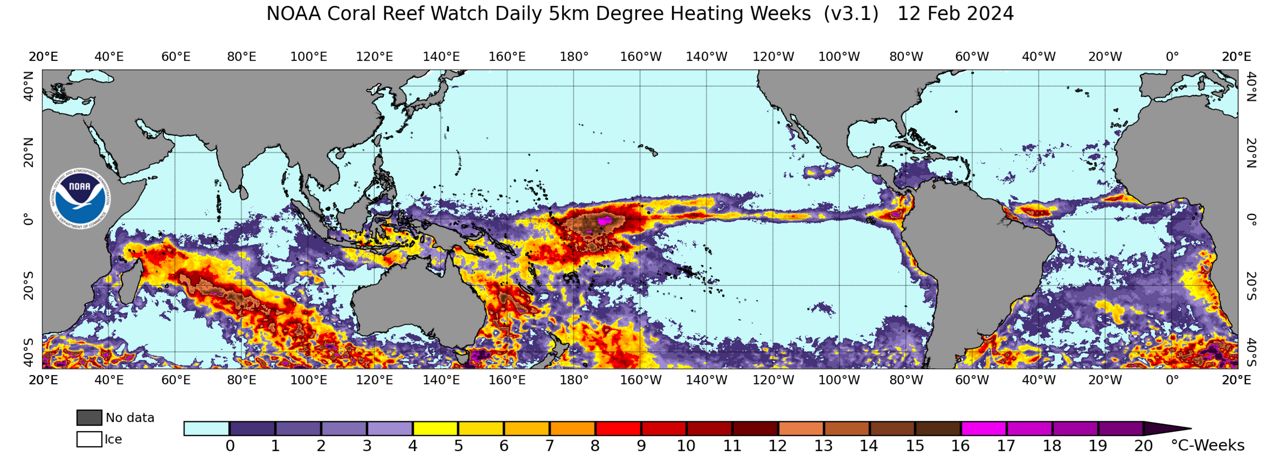2023 was a stressful year for Florida’s coral reefs. Sea surface temperature records were shattered for several days, and the unprecedented heat stress led to several bleaching events across Florida’s reefs.
Bleaching Watches were issued far north along Florida’s coastline, and parts of Cuba and the Bahamas saw their waters under a Level 2 Alert by NOAA’s Coral Reef Watch, the highest level on the scale.
But things are changing, and to keep up with a warming ocean, NOAA has revealed adjustments to their long-time Coral Reef Watch scale.
Following the hottest year on record, the National Oceanic and Atmospheric Administration (NOAA) has made changes to the alerts their Coral Reef Watch division issues.
NOAA established the Coral Reef Watch program back in 2000 after mass coral bleaching became more visible after 1980.
Scientists learned about the significant ecological, economic and societal benefits coral reefs bring to a local ecosystem, and NOAA needed to observe and alert users of potentially hazardous threats to the reefs around the globe.
A DLNR diver assessing damage to the coral reef at Kaneohe Bay. (DLNR)
Previously, the Coral Reef Watch’s Bleaching Alert scale had five separate categories, running from No Stress to Alert Level 2. That level warned users of a “risk of reef-wide bleaching with mortality of heat-sensitive corals.”
This type of alert assured users of permanent and irreversible damage to the coral ecosystem.
But now, NOAA has taken steps to implement three new alert levels beyond level 2. Bleaching Alert Level 3, 4 and 5 will provide a much more detailed look at where the most significant coral bleaching events occur across the world’s oceans.

NOAA’s bleaching alert map on Feb. 12, 2024. (NOAA)
Each new level brings a different interpretation to the impacts that part of the reef ecosystem experiences.
Bleaching Alert Level 3 will alert users to a risk of death of multiple species within the reef zone.
Alert Level 4 takes it a step further, indicating the risk of severe multi-species mortality.
Alert Level 5, now the highest on the scale, refers to a risk of near-complete mortality of a coral ecosystem with over 80% of all coral in the reef being lost.
The scale will rely heavily on NOAA’s DHW index, or degree heating weeks. The metric keeps track of how long a specific part of the ocean has remained above a certain bleaching threshold. The longer the threshold is met, the higher the DHW, which can increase the Bleaching Alert Level.

With the new additions to the scale, NOAA announced that DHWs ranging from 8 to 12 will correspond to a Level 2 bleaching event while any DHW metric over 20 corresponds to a Level 5 event.
The first use of the new Bleaching Alert Levels was on Jan. 31, 2024, with the release of a new global map. Parts of the central and southern Pacific Ocean–particularly near Tasmania and north of the Solomon Islands–were under alert levels 4 and 5.

Coral reefs act as important ecosystems for specific fish and plant life around the globe, especially in the tropics region. (Spectrum News)
Last year, a joint study from NOAA and the University of Queensland found marine heat waves, like the one Florida experienced last year, severely impact coral health and can disrupt the intricate balance the reefs provide to an ecosystem.
With high sea surface temperatures, symbiotic algae levels can fluctuate, causing bleaching events that can cascade through a large area in a short amount of time.
Our team of meteorologists dives deep into the science of weather and breaks down timely weather data and information. To view more weather and climate stories, check out our weather blogs section.

